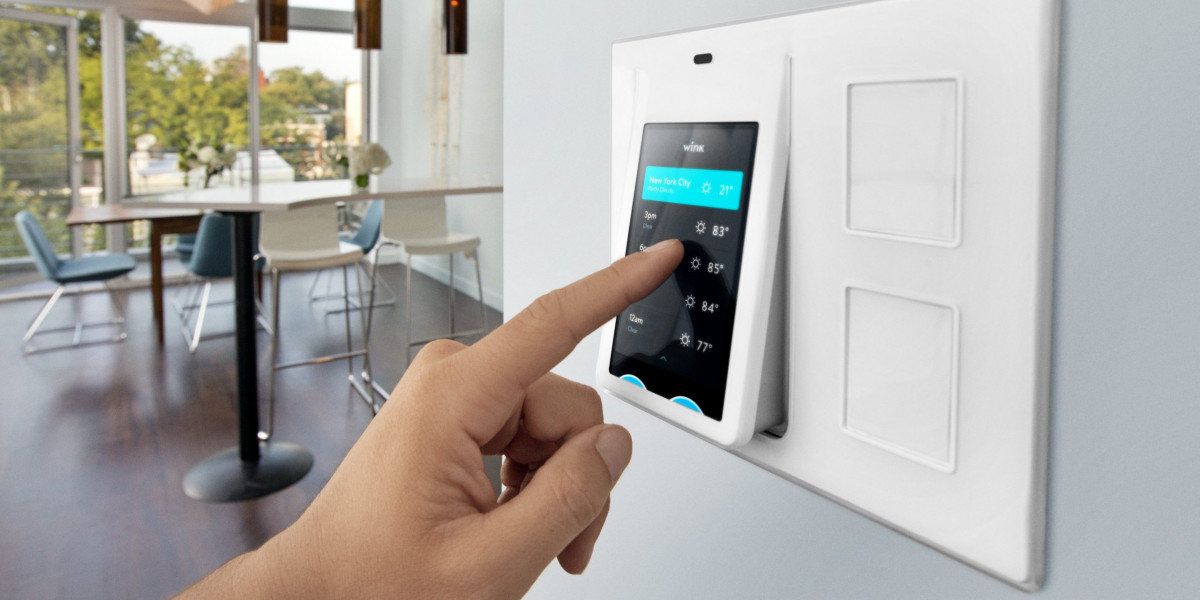The Smart Home Market is undergoing rapid transformation, driven by innovative technologies that are revolutionizing the way we live. Among these groundbreaking advancements, 5G connectivity is emerging as a pivotal factor in advancing the smart home ecosystem. As the demand for smarter, more interconnected homes increases, 5G technology offers significant improvements in speed, reliability, and efficiency, enabling a new wave of innovation in smart devices and home automation systems. This article explores how 5G connectivity is reshaping the smart home market, accelerating innovation, and enhancing the capabilities of smart devices.
The Role of 5G in the Smart Home Market
5G connectivity is the fifth generation of wireless technology, promising vastly improved internet speeds, lower latency, and greater capacity compared to its predecessors. These enhancements are particularly valuable for the smart home market, where seamless communication between devices is critical for efficient and responsive home automation. With 5G, smart devices can operate faster, more reliably, and with increased energy efficiency, paving the way for the next generation of connected homes.
One of the key features of 5G is its ability to support a vast number of connected devices simultaneously without sacrificing performance. In the context of a smart home, this means that an increased number of devices, such as smart thermostats, security cameras, lighting systems, voice assistants, and appliances, can be connected and function seamlessly without congestion or slowdowns. This ability to support a greater density of devices without compromising speed is crucial as homes become increasingly connected.
Enabling Real-Time Communication and Automation
The low latency of 5G technology—the time it takes for data to travel between devices—is a game-changer for smart home automation. In a smart home environment, real-time communication between devices is essential for smooth operation. For example, a smart security system that relies on sensors and cameras must be able to send alerts and streaming video feeds to homeowners without delay. With 5G's low latency, these processes can happen in near-instantaneous time, enhancing the responsiveness of smart devices and improving the user experience.
Moreover, 5G connectivity enables more complex and dynamic automation scenarios. With higher speeds and reduced delays, smart homes can incorporate more sophisticated automation routines that depend on real-time data. For instance, a smart thermostat can adjust the temperature based on real-time occupancy data from sensors, while smart lighting systems can adapt to changes in natural light throughout the day. The combination of these real-time capabilities leads to homes that are more intuitive, efficient, and responsive to the needs of the residents.
Boosting the Capabilities of Smart Devices
5G has the potential to significantly enhance the functionality of smart devices in the home, unlocking new capabilities that were previously limited by slower network speeds or bandwidth constraints. For instance, high-definition video streaming from smart cameras and doorbells can be done without buffering or lag, providing real-time surveillance and monitoring with crisp, clear visuals. This is especially beneficial for smart security systems, where image quality and speed are essential for identifying potential threats quickly.
Additionally, 5G's high bandwidth allows for better integration of AI-driven smart devices. Many smart devices, from voice assistants to smart refrigerators, rely on cloud-based AI to perform complex tasks such as voice recognition, image processing, and predictive analytics. With 5G's improved speeds, these AI applications can operate more efficiently, enabling devices to process data faster and respond to user inputs with minimal delay. This results in smarter and more adaptive devices that are better at anticipating user needs and adjusting to changing conditions.
For example, smart home appliances, like refrigerators, can send data about their status and usage patterns to cloud-based AI systems, which can then analyze the information and offer personalized recommendations to homeowners. With 5G connectivity, this data can be transmitted in real-time, allowing for immediate responses and updates.
Empowering Smart Cities with Connected Homes
The impact of 5G on the smart home market extends beyond individual households to entire communities. As 5G networks become more widespread, cities will be able to develop into smart cities, where homes are interconnected with other urban infrastructure such as traffic management, public services, and energy distribution. In these environments, smart homes will communicate with broader city systems, leading to more efficient energy use, better waste management, and optimized transportation networks.
For example, 5G-enabled smart homes can contribute to reducing energy consumption by adjusting heating and cooling based on data from the smart grid, which manages energy distribution across a city. Additionally, smart homes can become integral parts of smart transportation systems, where traffic signals and autonomous vehicles interact with homes to ensure smooth mobility.
In such ecosystems, 5G technology will enable real-time, city-wide communication and data sharing, transforming the way urban spaces are designed and managed. By integrating smart homes into the broader framework of a smart city, 5G connectivity will create more sustainable, efficient, and connected living environments.
Enhancing Security and Privacy in Smart Homes
Security and privacy concerns are often cited as major barriers to adopting smart home technologies. As smart devices become more interconnected, the risk of cyberattacks and unauthorized access increases. However, 5G connectivity offers a potential solution to these concerns by improving encryption, authentication protocols, and overall data security.
5G supports more advanced security protocols, enabling stronger encryption for data transmission between smart devices. This makes it more difficult for hackers to intercept sensitive information or gain unauthorized access to home networks. Additionally, 5G's enhanced network capabilities can allow for more secure and robust user authentication, such as biometric verification for controlling smart devices, providing added layers of protection for smart homes.
Moreover, 5G-enabled smart devices can be designed to operate within secure, isolated networks, reducing the risk of cyberattacks from external sources. This creates a more secure smart home ecosystem where users can confidently control their devices and monitor their homes remotely without worrying about data breaches or unauthorized surveillance.
The Future of the Smart Home Market with 5G
As 5G connectivity continues to expand globally, it will undoubtedly play a pivotal role in driving further innovation in the smart home market. With its ability to support more devices, enhance automation, improve real-time data processing, and enable smarter cities, 5G is set to be a cornerstone of the future of home automation.
However, for the full potential of 5G to be realized, widespread adoption of both the technology and compatible smart devices will be necessary. As manufacturers integrate 5G into more smart home products, consumers will experience more seamless, faster, and reliable automation systems. Over time, this will lead to more affordable and accessible smart home ecosystems, encouraging broader adoption across different demographics and regions.
Conclusion
The advent of 5G connectivity is set to revolutionize the smart home market, driving innovations that will reshape how we interact with our homes. With its improved speed, low latency, and enhanced bandwidth, 5G enables smarter, faster, and more efficient smart devices, as well as more dynamic home automation systems. It empowers smarter homes that can respond to real-time data, increases the capabilities of connected devices, and supports the creation of smart cities. As 5G continues to roll out and mature, its impact on the smart home ecosystem will continue to grow, unlocking new possibilities for consumers, businesses, and cities alike.
Learn more:-https://www.pristinemarketinsights.com/smart-home-market-report










